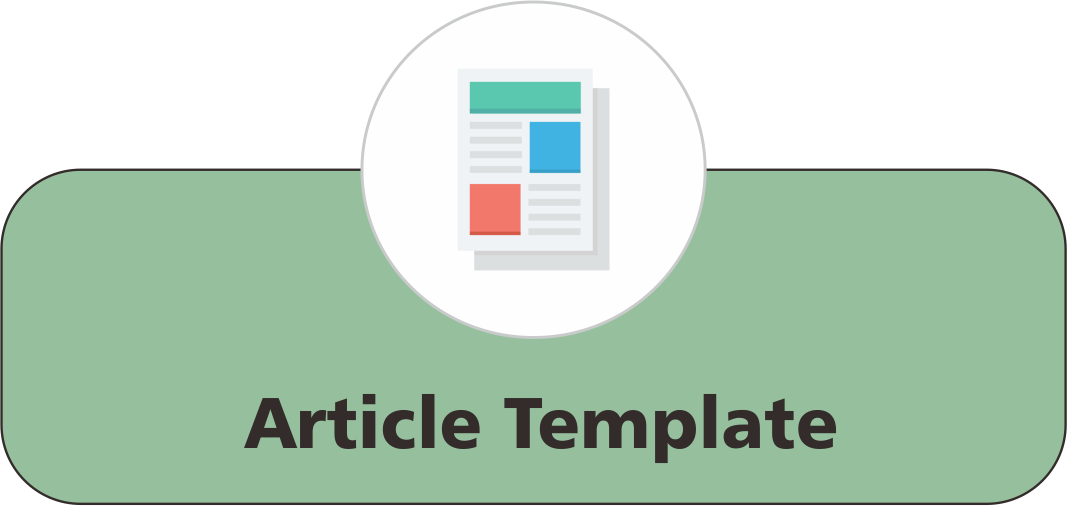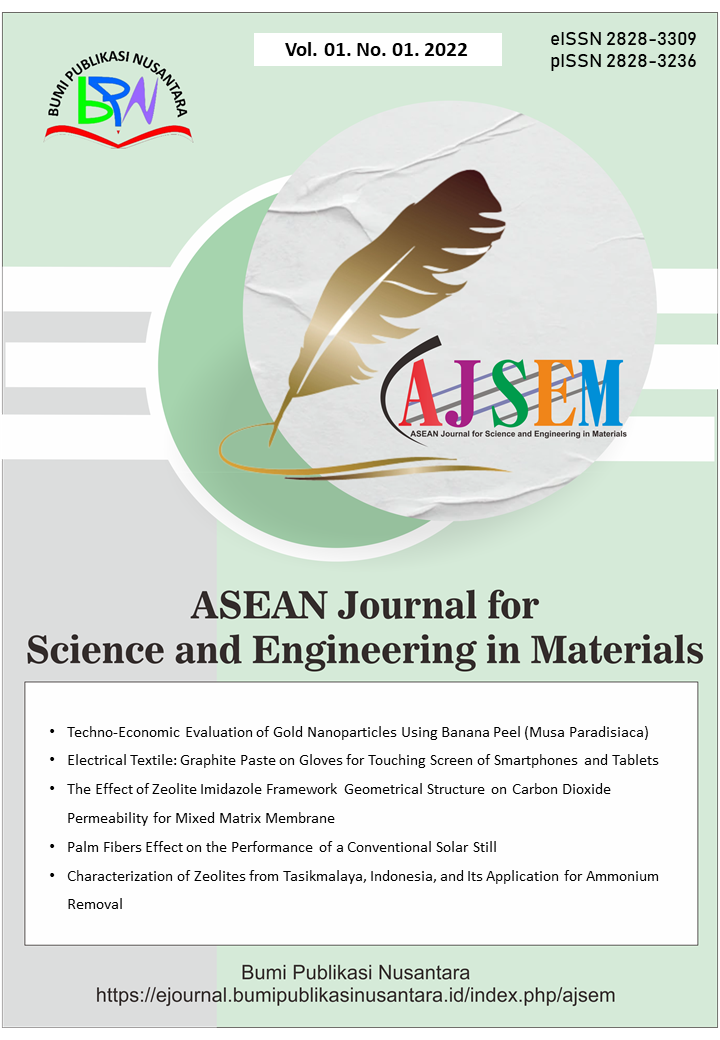Enhancing Photovoltaic Efficiency through Paraffin–Pomegranate Phase Change Composites: An Experimental Approach with Bibliometric Analysis toward Sustainable Thermal Management Aligned with Sustainable Development Goals (SDGs)
 ), Faris M. AL‑Oqla(2), Mohamad Otair(3),
), Faris M. AL‑Oqla(2), Mohamad Otair(3),
(1) The Hashemite University
(2) The Hashemite University
(3) The Hashemite University
 Corresponding Author
Corresponding Author
Abstract
Keywords
References
Abdollahi, N., and Rahimi, M. (2020). Potential of water natural circulation coupled with nano-enhanced PCM for PV module cooling. Renewable Energy, 147, 302–309.
Abdulmunem, A. R., Samin, P. M., Rahman, H. A., Hussien, H. A., Mazali, I. I., and Ghazali, H. A. (2021). Numerical and experimental analysis of the tilt angle’s effects on the characteristics of the melting process of PCM-based as PV cell’s backside heat sink. Renewable Energy, 173, 520–530.
Bharathiraja, R., Ramkumar, T., Karthick, L., and Mohanraj, M. (2024). Performance investigation on flat plate solar water collector using a hybrid nano-enhanced phase change material (PCM). Journal of Energy Storage, 86, 111163.
Darkwa, J., Calautit, J., Du, D., and Kokogianakis, G. (2019). A numerical and experimental analysis of an integrated TEG–PCM power enhancement system for photovoltaic cells. Applied Energy, 248, 688–701.
El Kassar, R., Al Takash, A., Faraj, J., Khaled, M., and Ramadan, H. S. (2024a). Phase change materials for enhanced photovoltaic panels performance: A comprehensive review and critical analysis. Energy and Built Environment, 6(4), 655-675.
Foteinis, S., Savvakis, N., and Tsoutsos, T. (2023). Energy and environmental performance of photovoltaic cooling using phase change materials under the Mediterranean climate. Energy, 265, 126355.
Govindasamy, D., and Kumar, A. (2023). Evaluation of the impact of different composite phase change materials on reduction in temperature and enhancement of solar panel efficiency. Journal of Energy Storage, 60, 106631.
Homlakorn, S., Suksri, A., and Wongwuttanasatian, T. (2022). Efficiency improvement of PV module using a binary-organic eutectic phase change material in a finned container. Energy Reports, 8(Suppl 10), 121–128.
Karthikeyan, V., Sirisamphanwong, C., Sukchai, S., Sahoo, S. K., and Wongwuttanasatian, T. (2020). Reducing PV module temperature with radiation-based PV module incorporating composite phase change material. Journal of Energy Storage, 29, 101346.
Li, Z., Ma, T., Zhao, J., Song, A., and Cheng, Y. (2019). Experimental study and performance analysis on solar photovoltaic panel integrated with phase change material. Energy, 178, 471–486.
Liu, L., Niu, J., and Wu, J. Y. (2023). Improving energy efficiency of photovoltaic/thermal systems by cooling with PCM nano-emulsions: An indoor experimental study. Renewable Energy, 203, 568–582.
Ma, T., Li, Z., and Zhao, J. (2019). Photovoltaic panel integrated with phase change materials (PV-PCM): Technology overview and materials selection. Renewable and Sustainable Energy Reviews, 116, 109406.
Maryanti, R., Rahayu, N. I., Muktiarni, M., Al Husaeni, D. F., Hufad, A., Sunardi, S., and Nandiyanto, A. B. D. (2022). Sustainable development goals (SDGs) in science education: Definition, literature review, and bibliometric analysis. Journal of Engineering Science and Technology, 17(6), 161-181.
Mohammed, M. A., Ali, B. M., Yassin, K. F., Ali, O. M., and Alomar, O. R. (2024). Comparative study of different phase change materials on the thermal performance of photovoltaic cells in Iraq's climate conditions. Energy Reports, 11, 18–27.
Mubarokah, S. L., Anwar, S., Nisa, K., Miftah, H., Hastuti, A., and Nandiyanto, A. B. D. (2024). Bibliometrics study on agro-economy of biochar. Journal of Engineering Science and Technology, 19, 142-152.
Nandiyanto, A. B. D., Kurniawan, T. E. G. U. H., Bilad, M. R., and Farobie, O. B. I. E. (2025). Harnessing biomass for Sustainable Development Goals (SDGs): Definition, bibliometric, application, opportunities, and challenges. Journal of Engineering Science and Technology, 20(4), 1047-1068.
Nijmeh, S., Hammad, B., Al-Abed, M., and Bani-Khalid, R. (2020). A technical and economic study of a photovoltaic–phase change material (PV–PCM) system in Jordan. Jordan Journal of Mechanical and Industrial Engineering, 14(4), 371–379.
Rajvikram, M., Leoponraj, S., Ramkumar, S., Akshaya, H., and Dheeraj, A. (2019). Experimental investigation on the abasement of operating temperature in solar photovoltaic panel using PCM and aluminium. Solar Energy, 188, 327–338.
Reji Kumar, R., Kalidasan, B., Imtiaz Ali Lagari, J. K., Siaw Paw, A. G. N. S., Sofiah, A. G. N., Suraparaju, S. K., Pandey, A. K., Samykano, M., Soudagar, M. E. M., and Khan, T. M. Y. (2024). Progress in research and technological developments of phase change materials integrated photovoltaic thermal systems: The allied problems and their mitigation strategies. Sustainable Materials and Technologies, 40, e00921.
Rozon, F., McGregor, C., and Owen, M. (2023). Long-term forecasting framework for renewable energy technologies’ installed capacity and costs for 2050. Energies, 16(19), 6874.
Savvakis, N., Dialyna, E., and Tsoutsos, T. (2020). Investigation of the operational performance and efficiency of an alternative PV+PCM concept. Solar Energy, 211, 1283–1300.
Sharma, A., Tyagi, V. V., Chen, C. R., and Buddhi, D. (2009). Review on thermal energy storage with phase change materials and applications. Renewable and Sustainable Energy Reviews, 13(2), 318–345.
Soares, N., Costa, J. J., Gaspar, A. R., Matias, T., Simões, P. N., and Durães, L. (2020). Can movable PCM-filled TES units be used to improve the performance of PV panels? Overview and experimental case study. Energy and Buildings, 210, 109743.
Solehuddin, M., Nandiyanto, A. B. D., Muktiarni, M., Rahayu, N. I., Al Husaeni, D. N., Ragadhita, R., and Fiandini, M. (2025). Engineering research and scientific contributions at Universitas Pendidikan Indonesia: Trends, challenges, and future directions. Journal of Engineering Science and Technology, 20(3), 816-836.
Sudhakar, P., Santosh, R., Asthalakshmi, B., Kumaresan, G., and Velraj, R. J. R. E. (2021). Performance augmentation of solar photovoltaic panel through PCM-integrated natural water circulation cooling technique. Renewable Energy, 172, 1433–1448.
Tao, M., Li, Z., and Zhao, J. (2019). Photovoltaic panel integrated with phase change materials (PV-PCM): Technology overview and materials selection. Renewable and Sustainable Energy Reviews, 116, 109406.
Article Metrics
Abstract View : 50 times
: 50 times Download : 33 times
Download : 33 times
Refbacks
- There are currently no refbacks.
Copyright (c) 2025 Bumi Publikasi Nusantara

This work is licensed under a Creative Commons Attribution-ShareAlike 4.0 International License.









